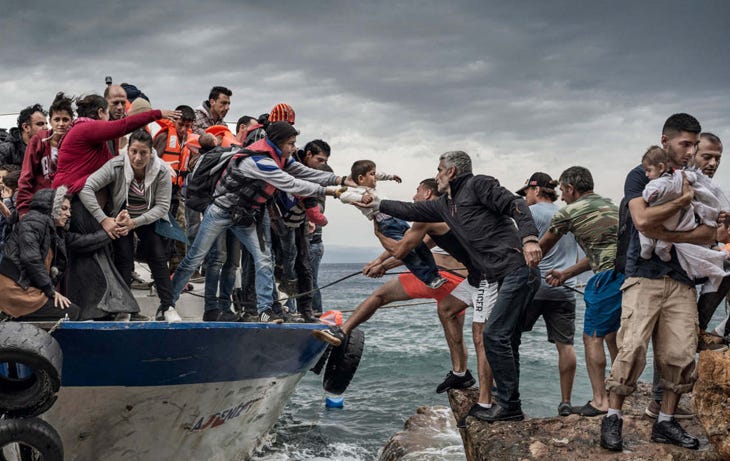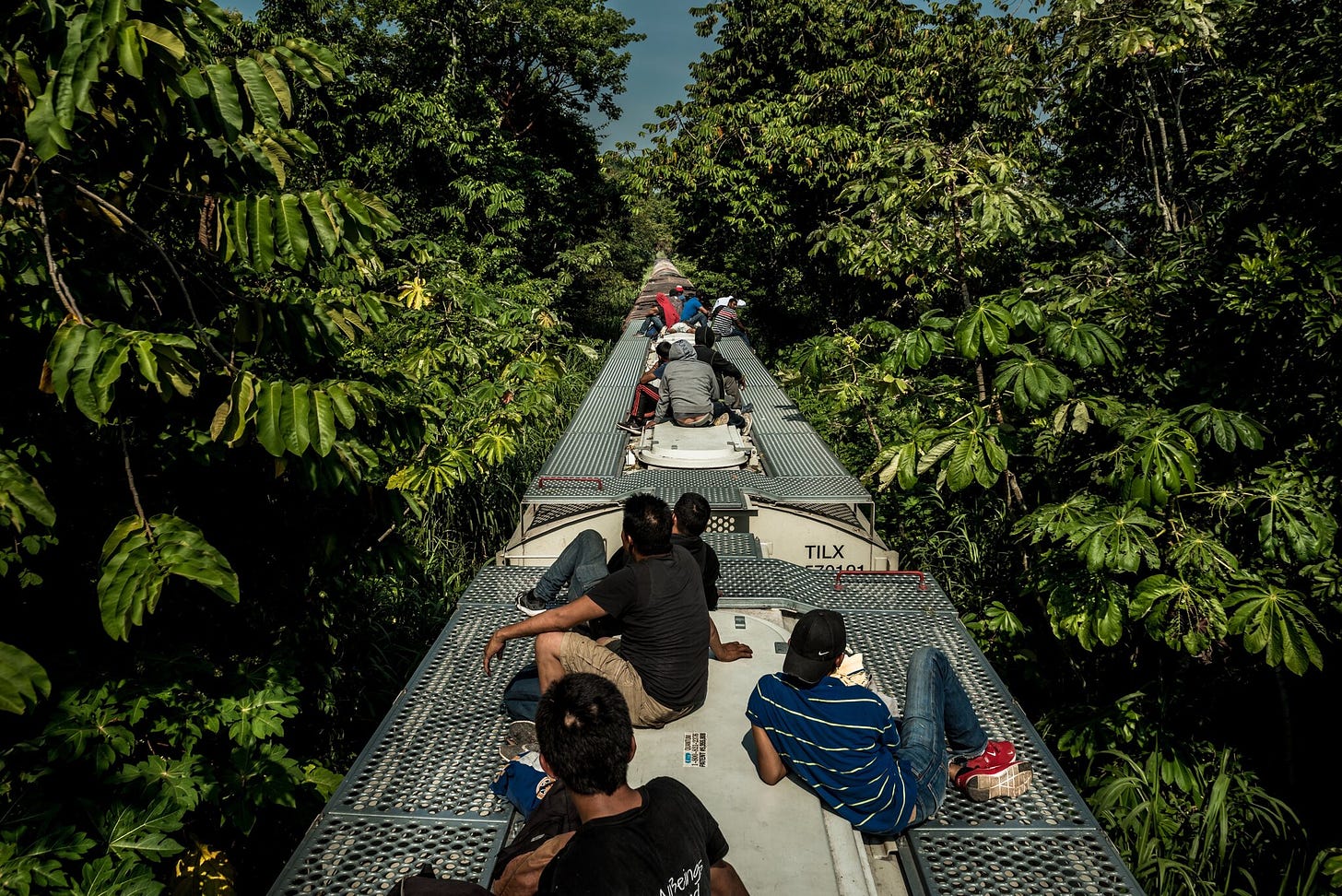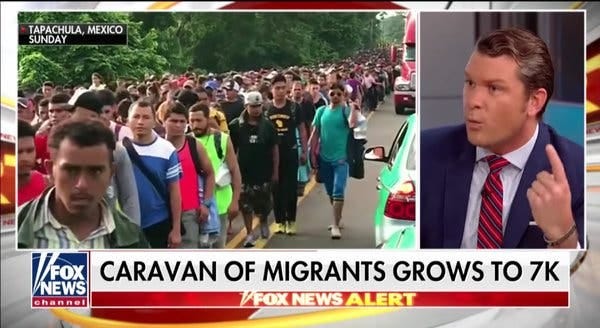Climate impacts ripple out
The instability risk of climate change is clearest in its second and third order effects
Last week I wrote about the destruction already being caused by climate change-intensified extreme weather. But it’s not just unprecedented weather disasters we need to account for, it’s also the damage they cause to human systems and the outward ripples of that damage within and between societies.
For example, climate change helped make the mid-2000s drought in Syria the worst in centuries. The drought led to widespread hunger, dislocation, and desperation. Stacked on top of longstanding disenchantment with the al-Assad regime,1 the suffering and disorder sparked a popular revolt against the government.
Starting in 2006, Syria suffered its worst drought in 900 years; it ruined farms, forced as many as 1.5 million rural denizens to crowd into cities alongside Iraqi refugees and decimated the country’s livestock. Water became scarce and food expensive. The suffering and social chaos caused by the drought were important drivers of the initial unrest.
The government responded to the uprising with violence, and things spiraled into a full blown civil war. The fighting devastated the country, causing widespread societal breakdown and forcing several million Syrians to flee. More than one million migrated to Europe.
The arrival in Europe of a large number of Syrian refugees in a short period contributed to a rise of authoritarian nationalist leaders, weakening democracy across the continent. As the New York Times explained in 2017:
Images of crowds of desperate refugees – and of the extreme violence they had faced at home – were used by politicians to fuel fears of Islam, and of Muslims. That lifted far-right European parties already riding on resentment of immigrants, from Finland to Hungary… Suddenly European countries were erecting fences and internment camps to stop migrants. While Germany welcomed refugees, other countries resisted sharing the burden. The far right spoke of protecting white, Christian Europe. Even the Brexit campaign played, in part, on fears of the refugees.

Today, Hungary, Serbia, and Montenegro are no longer democracies governed by the rule of law. Poland is hanging by a thread, at best.
To recap: a climate change-worsened drought destroyed farms in Syria, leading to hunger, popular revolt, and civil war, the devastation of which drove several million Syrians out of their country. One million Syrians sought refuge in Europe, and aspiring authoritarian rulers exploited prejudice toward Muslims to conjure a sense of menace and ultimately win power at the expense of democracy.
Another example of potentially destabilizing second and third order effects of climate change is the migration of Central Americans to other countries, including the U.S., due in part to deteriorating farming conditions. Less rain and more heat has dried the soil and left the land unable to produce enough food to sustain families.
The odd weather phenomenon that many blame for the suffering here — the drought and sudden storm pattern known as El Niño — is expected to become more frequent as the planet warms. Many semiarid parts of Guatemala will soon be more like a desert. Rainfall is expected to decrease by 60 percent in some parts of the country, and the amount of water replenishing streams and keeping soil moist will drop by as much as 83 percent.

When rain does fall on Central American farms, it is often too much too fast. Here’s how Reuters described the impact on one small community of Hurricanes Eta and Iota, which slammed the region back-to-back in November 2020:
Villagers in Guatemala’s Mayan hillside hamlet Sanimtaca had been about to harvest their cardamom crops that take three years to grow when waves of floodwater triggered by two tropical storms last month washed them away.
…“No one had ever seen flooding like it around here,” the 35-year-old who has been collecting food and clothing donations told Reuters. “The school is flooded, the cemetery is flooded.”
This week brought an official close to the most active Atlantic hurricane season ever recorded, with 30 named storms including 13 hurricanes.
And thanks to climate change, experts warn, Central America will have to brace for stronger storm impacts in the future.
As the changing climate makes farming less viable in the countryside, many Central Americans migrate to cities in search of work. But for most, it’s not an answer. Economic opportunity is scarce in most Central American cities, and large areas are controlled by gangs and overrun with violence, corruption, and lawlessness. Faced with few good options, many leave and head north. In fiscal year 2021 (October 1, 2020 – September 30, 2021), a record 1.7 million people were encountered trying to enter the U.S. from Mexico2. (That’s 1.7 million people total, not just from Central America.)
In the U.S., because the voices that appeal to hot emotions like fear and anger win the attention war, the discourse around would-be immigrants is reliably agitated and hysterical.3 The migration of Central Americans is regularly presented to right-wing audiences as the advance of a threatening “caravan.” The xenophobia nourishes the growing right-wing authoritarian movement, which is in full control of the Republican Party.
As more immigrants fleeing climate disaster arrive in the United States and crash into a thriving authoritarian movement, the second and third order effects could be volatile, to say the least.
The exodus of people from places being gradually destroyed by climate change is not exceptional, it’s already happening around the world.
In Southeast Asia, where increasingly unpredictable monsoon rainfall and drought have made farming more difficult, the World Bank points to more than eight million people who have moved toward the Middle East, Europe and North America. In the African Sahel, millions of rural people have been streaming toward the coasts and the cities amid drought and widespread crop failures. Should the flight away from hot climates reach the scale that current research suggests is likely, it will amount to a vast remapping of the world’s populations.
A “remapping of the world’s populations” sounds technocratic, but recent history suggests even modest human migrations can contribute to social chaos.
[Clears throat] In conclusion…
Climate change leads to extreme weather, which often disrupts human systems, causing deprivation and disorder. People leave damaged places in search of opportunity and a better life. In destination countries, reactionary voices trying to win political power and the attention war will portray the arrival of climate refugees as a dangerous threat. The future is hard to predict, but fear, menace, and perceived disorder is a recipe for authoritarianism.
This is another destabilizing system dynamic operating in the world today. It’s one more reason families, communities, and organizations need to extend and deepen their thinking about resilience, and develop ruggedization strategies in the face of unpredictable, multi-source turbulence in the years ahead.
Notes:
https://www.nytimes.com/2015/03/03/science/earth/study-links-syria-conflict-to-drought-caused-by-climate-change.html
https://www.pbs.org/newshour/economy/a-major-contributor-to-the-syrian-conflict-climate-change
https://www.nytimes.com/2017/04/21/sunday-review/one-countrys-war-changed-the-world.html
https://www.npr.org/2020/05/07/851774707/democracy-at-risk-in-central-and-eastern-europe-report-finds
https://freedomhouse.org/report/nations-transit/2020/dropping-democratic-facade
https://www.nytimes.com/interactive/2020/07/23/magazine/climate-migration.html
https://www.nytimes.com/2021/10/22/us/politics/border-crossings-immigration-record-high.html
https://www.reuters.com/article/us-climate-change-hurricanes-idINKBN28D2V6
https://www.wilsoncenter.org/publication/crime-and-violence-central-americas-northern-triangle-how-us-policy-responses-are
Hafiz al-Assad seized power in a military coup in 1970; his son, Bashar, took over in 2000.
A growing percentage of these encounters are repeats, meaning they have attempted to cross into the U.S. previously. This suggests it is becoming harder to enter the U.S. and, therefore, that the increase in encounters is less than the increase in unauthorized entry.
And racist.




